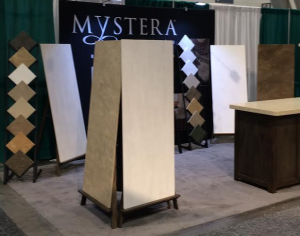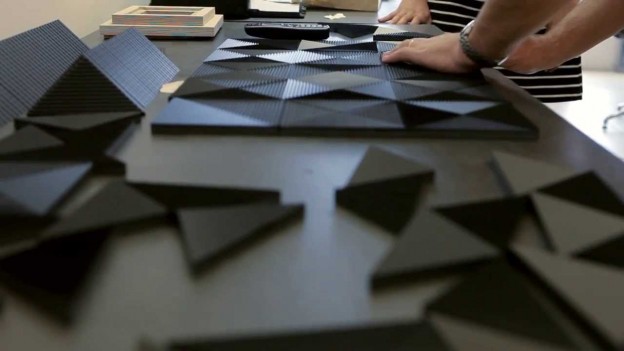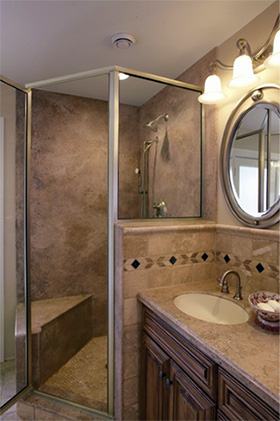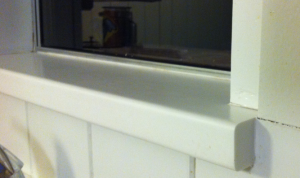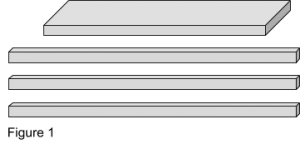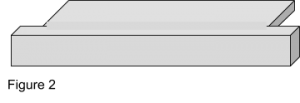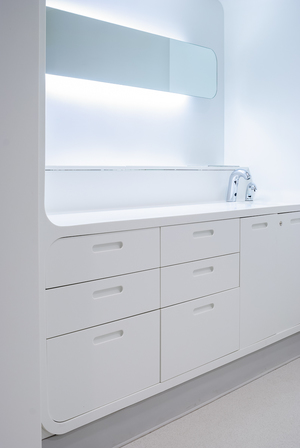
Cabinets made from Corian® Glacier White
Why settle for the ordinary? …When you can have extraordinary. Imagine having cabinets where you can maintain their finish with very little effort, while still possessing a seemingly indestructible quality.
Sound too good to be true? It’s not. We’re talking about cabinets made out of 100 percent solid surface. The possibilities with using Corian® and solid surface have always been endless, yet designers, cabinetmakers and fabricators are taking its use to an unprecedented new level, using the material to create entire cabinet systems.
Here are three reasons that we feel the new trend in using solid surface for all of your cabinetry needs is an excellent idea—both in form and function:


